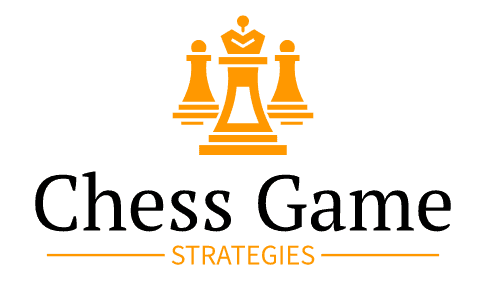
Chess Glossary : Section P
Pairing
Refers to assigning opponents in chess tournaments, as the players are Paired up.
Passed Pawn
Refers to any Pawn that makes it into the enemy’s half of the Chess Board and can no longer be prevented from reaching the back row, whereupon it’ll get Promoted to either a Knight, Bishop, Rook, or Queen.
Passer
Slang term for a Passed Pawn … As in “White has a Passer on the b-file “.
Passive
A piece that doesn’t have many squares to control or move to is said to be Passive. Also known as an Inactive piece.
Passive Sacrifice
Instead of moving a piece into to position so it can be captured (a normal Sacrifice), you leave the piece where it is, exposed to capture and, instead, choose to move another unit. The sacrificial piece is inactive, or “passive”, in the process, hence the term Passive Sacrifice.
Pawn Chain
A formation of Pawns, arranged in a diagonal line, which is stronger at the front; weaker at the base (the last Pawn, at the bottom of the Chain).
Pawn Chess Piece
Humblest of all chess pieces … Has a clever trick called Pawn Promotion – which, heard in isolation, could be confused with a risqué career choice; something guaranteed to raise eyebrows or childish sniggers following the surprise attack of a double entendre.
Pawn Island
One or more Pawns separated by a clear File – that is, no Pawn from the same side is on an adjacent File – are known as Pawn Islands … They’re weaknesses to exploit in your enemy’s position.
Pawn Majority
One army has a greater number of Pawns on a single side of the board than their opponent. This requires looking at each side of the board in isolation (Kingside or Queenside). For instance, looking at the Queenside only, if there is an imbalance of Pawns, then whichever army has the greater number of Pawns has a Queenside Pawn Majority (e.g. one army has 3 Pawns, versus the opponent’s 2 Pawns).
Pawn on 4th v Pawn on 3rd
The Chess Glossary Team have a distinct feeling they’re not going to get this one and suggest clicking the link and finding out for yourself. They have a vague idea it’s to do with Ranks … but the only Rank thing they’re familiar with, is currently in the corner, growing a life form of its own (it could well have been an old cheesy Ritz Cracker from the last Christmas party, but no one can tell for sure).
Pawn Storm
When a player advances a group of Pawns on one of the Flanks, to attack the enemy’s position, the attacking group is referred to as a Pawn Storm.
Pawn Structure
1. The Chess Glossary Team were already on the phone to Hugh Heffner, when management brought attention to the differences in the spelling and told everybody to stop acting like tits … at which point Hugh perked up.
2. Refers to the arrangement of Pawns on the Chess Board and is sometimes known as a Pawn Skeleton.
PC Chess Game
Chess computer game played by those who cannot afford a Mac.
PCA
Abbreviation for the Professional Chess Association – a short-lived rival to FIDE. The PCA was formed in 1993 by Englishman GM Nigel Short and GM Garry Kasparov. The organization went belly-up when Intel, their main sponsor, decided not to renew their funding, in 1996.
Performance Rating
A score given to players to assess their playing performance, following games, matches and tournaments that award ratings points.
Perpetual Check
A situation in chess where stalemate (a draw) can be forced by a merry-go-round, never-ending series of Checks.
Perpetual Pursuit
Whereas Perpetual Check is a merry-go-round of never-ending series of Checks, Perpetual Pursuit is where either a Knight, Bishop, Rook, or Queen is being pursued but can forever escape and can end up triggering the Three Repetitions Rule, whereby a Draw (Stalemate) can be declared.
Personal Chess Trainer
Idleness has crept back into the Chess Glossary Team without protest and has led to the request that you ignore the Personal bit, and the creation of this link.
Petite Combination
1. A short sequence of moves – likely to involve a single Chess Tactic, like a Pin or Discovered Attack, followed by an extra, standard move.
2. The Chess Glossary Team likens it to Bacon and Eggs on Toast – a decent attempt, but not quite a Full English Breakfast.
PGN
1. The Chess Glossary Team finally worked out it’s not short for pigeon.
2. Abbreviation for Portable Game Notation, which allows games of chess to be copied and then pasted into capable chess software (such as Fritz 12 and similar programs).
Phalanx
A Phalanx is an attacking Pawn formation and occurs when two or more friendly Pawns sit alongside each other, on adjacent Files, on the same Rank.
Philidor Position
Refers to a specific Endgame position, which was analyzed by Frenchman François-André Danican Philidor (one of the best players, during the 18th Century), involving a Rook and Pawn versus a Rook.
Piece
A Knight is a Piece. A Bishop is a Piece. A Rook is a Piece. A Queen is a Piece. A King is a Piece. A Pawn is NOT a Piece (it’s just a Pawn).
Pig
1. Apparently a slang term for the Rook. There’s even a saying to go along with it: Pigs on the 7th.
2. The Chess Glossary Team muttered something spiteful. They don’t get it and think slang is being far too abused these days.
Pin
In the physical world, a ‘Pin’ is used to “hold something in place” … In Chess, a Pin is a tactical move design to trap and hold an enemy Pawn or Piece on it’s square, unable to move because it is guarding a higher-value piece immediately behind it.
Pitfall
A Pitfall a is term that helps to distinguish itself from Traps and Swindles. Proposed by IM Israel Albert Horowitz and leading Chess author, Fred Reinfeld. They state: “In a “pitfall”, the beneficiary of the pitfall plays an active role, creating a situation where a plausible move by the opponent will turn out badly“.
Plan
1. Over the desk, down the fire escape, cross the road, down the alley, rubberneck passed the strip joint, and into the boozer.
2. Can be either a Short-term or Long-term objective during a game of Chess. Short-term could be to set up a capture by way of a Chess Fork; Long-term would be more like noticing a weakness on your opponent’s Kingside and planning to focus your attacks on that side of the board.
Playable
If a move or Opening sequence is plausible (i.e. it’s not likely to spring any nasty surprises), then it’s considered to be “Playable “.
Ply
Refers to a single turn by one player. In a single move, each player makes a single Ply. This concept is important in computer chess programs as it helps the computer to determine which side’s turn it is and when a full move has been made. The term is based on the word “reply”, which was adopted by computer gaming and artificial intelligence pioneer, Arthur L. Samuel (1901-1990).
Point Count
1. The Chess Glossary Team know of a game – it’s great on car journeys in built up, urban areas: dogs score 10 points, kids 20 points, grannies 30 points … You deduct points for every one you fail to hit and the winner is the one with the biggest Point Count. We know what you’re thinking and it’s okay – points are arbitrary and can be easily changed.
2. A numeric system for valuing Chess Pieces: Pawns (1 point), Knights (3), Bishops (3), Rooks (5), Queen (9). As for the King, due to its importance, it’s invaluable – protect it, or lose the game.
Poisoned Pawn
A Pawn that causes positional problems or the loss of material, should it be captured. By the way, it’s the player who captures the Poisoned Pawn who gets lumbered with the problems.
Portable Game Notation
A format that allows computers to process chess moves and positions. Games of chess can be copied and then pasted into capable chess software (such as Fritz 12 and similar programs). Portable Game Notation is usually abbreviated to PGN.
Positional Play
When you aim for a slow development of moves, your style of play is aiming for positional advancement, over a sudden attack and capture maneuver. Such players are known as Positional Players, which distinguishes them from Tacticians, who focus on tactical play.
Post-mortem
When the game has finished, if players want to learn from their game, they’ll conduct a Post-mortem, to analyze what went on. Sometimes, both players will sit and carry out the Post-mortem, together.
Prepared Variation
This is what makes elite players favorable contenders for World Chess Championships and other high-ranking Tournaments – they’ll train themselves to memorize many “Textbook Openings” (like The Ruy Lopez) and, during their study, they’ll hope to find a new move or Plan that might stand a good chance of succeeding in competition – these are their Prepared Variations.
Prophylaxis
A Greek word for “guarding” or “preventing beforehand”). In chess, a “Prophylactic move ” is one that prevents an opponent from taking action in a particular region of the board, in order to stop a possible attack.
Promotion
1. Something totally alien to every member of the Chess Glossary Team.
2. Advancing a Pawn to the enemy’s back row resulting in advantageous exchange for either another: Knight, Bishop, Rook, or Queen (those are the ‘promoted’ pieces involved in this special move, also known as ‘Pawn Promotion’).
Protected Passed Pawn
When a Passed Pawn has rearguard support, from a fellow Pawn, it is referred to as being a Protected Passed Pawn – the Pawn behind is protecting it on its way to Promotion.
Pseudo-sacrifice
Also known as a “Sham sacrifice”, it’s when a player offers a Pawn or Piece, as a sacrifice, but there’s no risk in making the sacrifice, as the player stands to make an equal or greater gain in material or will succeed in Checkmating their opponent, should they accept the sacrificial offering.
Push
When you advance a Pawn, you Push it forward.

